Eugene F. Brigham
Visit to download the full and correct content document: https://textbookfull.com/product/intermediate-financial-management-eugene-f-brigha m/

More products digital (pdf, epub, mobi) instant download maybe you interests ...

Financial Management: Theory & Practice Eugene F. Brigham
https://textbookfull.com/product/financial-management-theorypractice-eugene-f-brigham/
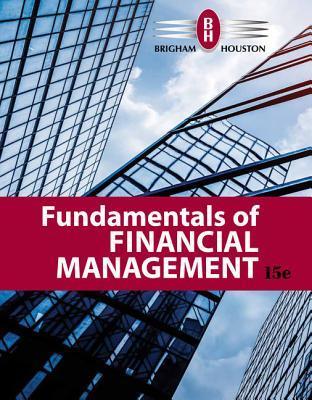
Fundamentals of Financial Management Eugene F. Brigham
https://textbookfull.com/product/fundamentals-of-financialmanagement-eugene-f-brigham/

Fundamentals of Financial Management Concise Edition
Eugene F. Brigham
https://textbookfull.com/product/fundamentals-of-financialmanagement-concise-edition-eugene-f-brigham/
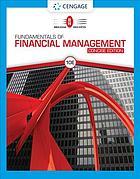
Fundamentals of Financial Management, Concise 10th Edition Eugene F. Brigham
https://textbookfull.com/product/fundamentals-of-financialmanagement-concise-10th-edition-eugene-f-brigham/
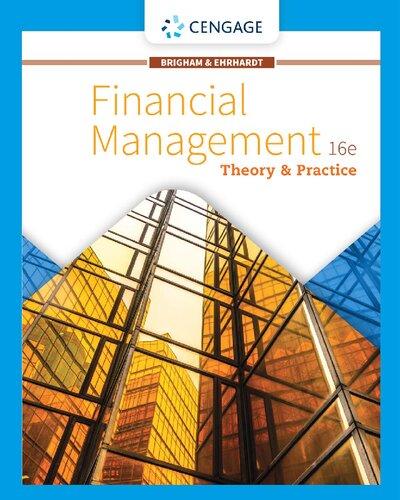
Financial Management Theory Practice 16th Edition
Brigham Eugene F Ehrhardt Michael C
https://textbookfull.com/product/financial-management-theorypractice-16th-edition-brigham-eugene-f-ehrhardt-michael-c/

Financial Management Theory and Practice 14th Edition
Eugene F Brigham Michael C Ehrhardt
https://textbookfull.com/product/financial-management-theory-andpractice-14th-edition-eugene-f-brigham-michael-c-ehrhardt/
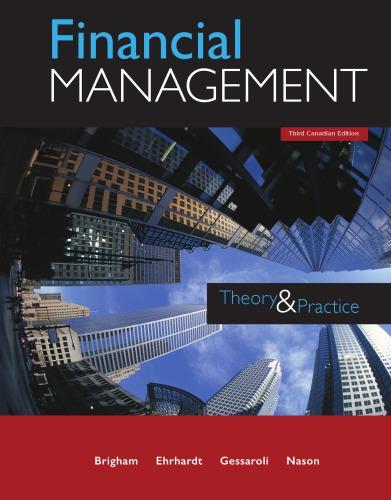
Financial management theory and practice Third Canadian Edition Brigham
https://textbookfull.com/product/financial-management-theory-andpractice-third-canadian-edition-brigham/

About Financial Accounting - Volume 1 F. Doussy
https://textbookfull.com/product/about-financial-accountingvolume-1-f-doussy/

About Financial Accounting Volume 2 (8th Edition) F Doussy
https://textbookfull.com/product/about-financial-accountingvolume-2-8th-edition-f-doussy/

Intermediate Financial Management
Thir T een T h e di T ion
Eugene F. Brigham University of Florida
Phillip R. Daves University of Tennessee
This is an electronic version of the print textbook. Due to electronic rights restrictions, some third party content may be suppressed. Editorial review has deemed that any suppressed content does not materially affect the overall learning experience. The publisher reserves the right to remove content from this title at any time if subsequent rights restrictions require it. For valuable information on pricing, previous editions, changes to current editions, and alternate formats, please visit www.cengage.com/highered to search by ISBN#, author, title, or keyword for materials in your areas of interest.
Important Notice: Media content referenced within the product description or the product text may not be available in the eBook version.
Intermediate Financial Management, 13th Edition
Eugene F. Brigham and Phillip R. Daves
Senior Vice President, Higher Ed Product,
Content, and Market Development: Erin Joyner
VP, B&E, 4LTR and Support Program: Mike Schenk
Sr. Product Team Manager: Joe Sabatino
Content Developer: Brittany Waitt
Product Assistant: Renee Schnee
Sr. Marketing Manager: Nathan Anderson
Content Project Manager: Nadia Saloom
Digital Content Designer: Brandon C. Foltz
Digital Project Manager: Mark Hopkinson
Marketing Communications Manager: Sarah Greber
Production Service: MPS Limited
Sr. Art Director: Michelle Kunkler
Text Designer: cmillerdesign
Cover Designer: cmillerdesign
Cover Image: SFIO CRACHO/Shutterstock.com
Design Image: SFIO CRACHO/Shutterstock.com
Intellectual Property
Analyst: Reba A. Frederics
Project Manager: Erika A. Mugavin
© 2019, 2016 Cengage Learning, Inc.
Unless otherwise noted, all content is © Cengage
ALL RIGHTS RESERVED. No part of this work covered by the copyright herein may be reproduced or distributed in any form or by any means, except as permitted by U.S. copyright law, without the prior written permission of the copyright owner.
For product information and technology assistance, contact us at Cengage Customer & Sales Support, 1-800-354-9706.
For permission to use material from this text or product, submit all requests online at www.cengage.com/permissions.
Further permissions questions can be emailed to permissionrequest@cengage.com.
Many of the figures and tables in this text were created jointly by Eugene F. Brigham, Phillip R. Daves, and Michael C. Ehrhardt for use in both Intermediate Financial Management and Financial Management: Theory and Practice.
Library of Congress Control Number: 2017959754
ISBN: 978-1-337-39508-3
Cengage
20 Channel Center Street Boston, MA 02210
USA
Cengage is a leading provider of customized learning solutions with employees residing in nearly 40 different countries and sales in more than 125 countries around the world. Find your local representative at: www.cengage.com.
Cengage products are represented in Canada by Nelson Education, Ltd.
To learn more about Cengage platforms and services, visit www.cengage.com.
To register or access your online learning solution or purchase materials for your course, visit www.cengagebrain.com.
Printed in the United States of America
Print Number: 01 Print Year: 2018


MindTap for Intermediate Financial Management
MindTap, featuring all-new Excel Online integration powered by Microsoft, is a complete digital solution for the corporate finance course. It has enhancements that take students from learning basic financial concepts to actively engaging in critical-thinking applications, while learning valuable Excel skills for their future careers.




Ev E rything you n EE d in on E plac E .
Cut prep time with MindTap preloaded, organized course materials. Teach more efficiently with interactive multimedia, assignments, quizzes, and more.

Empow E r your stud E nts to r E ach th E ir pot E ntial.
Built-in metrics provide insight into student engagement. Identify topics needing extra instruction. Instantly communicate with struggling students to speed progress.

your cours E . your cont E nt.
MindTap gives you complete control over your course. You can rearrange textbook chapters, add your own notes, and embed a variety of content—including Open Educational Resources (OER).

a d E dicat E d t E am, wh E n E v E r you n EE d it.
MindTap is backed by a personalized team eager to help you every step of the way. We’ll help set up your course, tailor it to your specific objectives, and stand by to provide support.

Elevate Critical Thinking through a variety of unique Assessment Tools

p ractic E p robl E ms
All of the end-of-chapter problems are available in algorithmic format for either student practice of applying content presented in the chapter or alternative graded assignment. MindTap is a highly customizable assessment delivery platform, so you can pick and choose from a large bank of algorithmic problem sets to assign to your students.
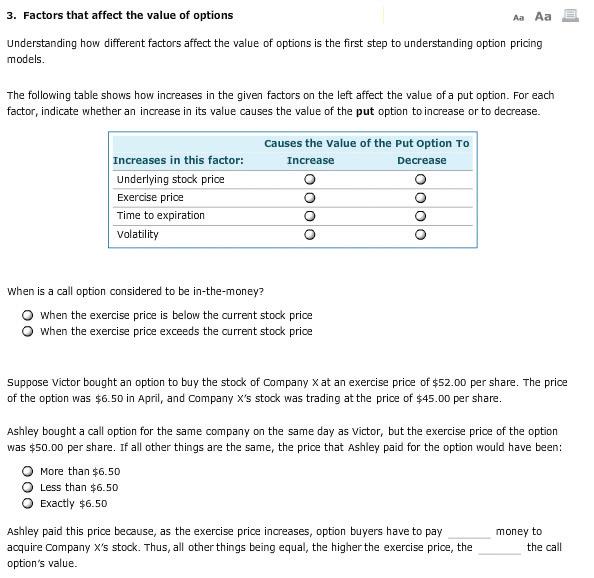
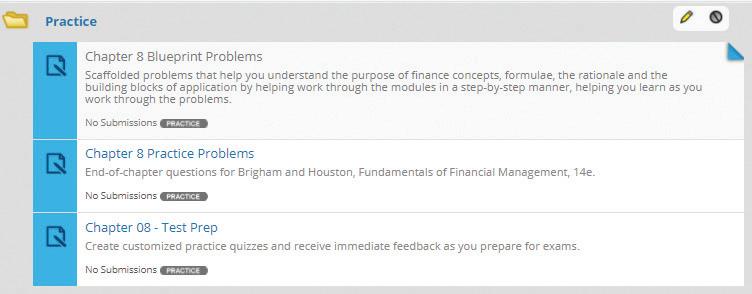
b lu E print p ractic E p robl E ms
Blueprint Practice Problems combine conceptual and applicationdriven problems with a tutorial emphasis. Students will know with certainty their level of competency for every chapter, which will improve course outcomes.
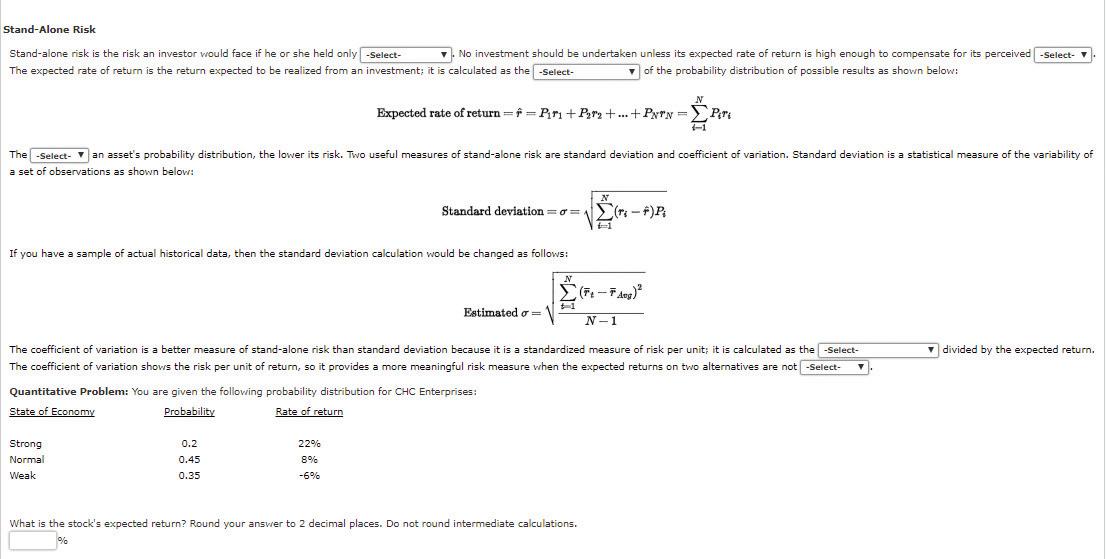

g rad E d h om E work
MindTap offers an assignable, algorithmic homework tool that is based on our proven and popular Aplia product for Finance. These homework problems include rich explanations and instant grading, with opportunities to try another algorithmic version of the problem to bolster confidence with problem solving.
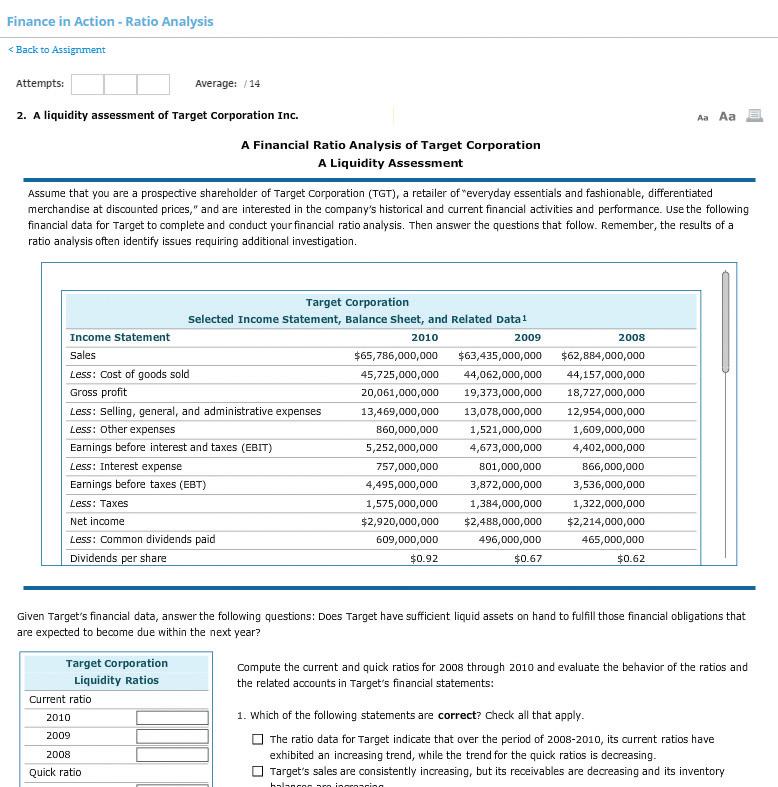

Financ E i n action c as E s

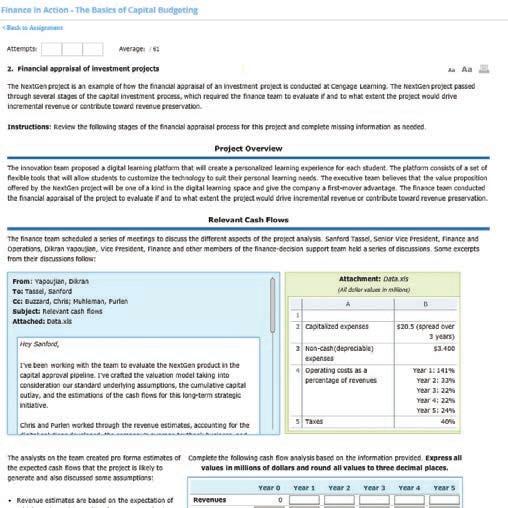
MindTap offers a series of Finance in Action analytical cases that assess students’ ability to perform higher-level problem solving and critical thinking/decision making.
tE sting
Mindtap offers the ability to modify existing assignments and to create new assignments by adding questions from the Test Bank.

Building valuable Excel skills for future business careers while making
data-driven decisions

Cengage Learning and Microsoft have partnered in MindTap to provide students with a uniform, authentic Excel assignment experience. It provides instant feedback, built-in video tips, and easily accessible spreadsheet work. These features allow you to spend more time teaching finance applications and less time teaching and troubleshooting Excel.
These new algorithmic activities offer pre-populated data directly in Microsoft Excel Online, which runs seamlessly on all major platforms and browsers. Students each receive their own version of the problem data in order to use Excel Online to perform the necessary financial analysis calculations. Their work is constantly saved in Cengage cloud storage as part of homework assignments in MindTap. It’s easily retrievable so students can review their answers without cumbersome file management and numerous downloads/uploads.
Access to Excel Online as used in these activities is completely free for students as part of the MindTap course for Intermediate Financial Management, 13e. It is not in any way connected to personal Office 365 accounts/ local versions of Excel, nor are Microsoft accounts required to complete these activities in MindTap.
Microsoft Excel Online activities are aimed at meeting students where they are with unparalleled support and immediate feedback.
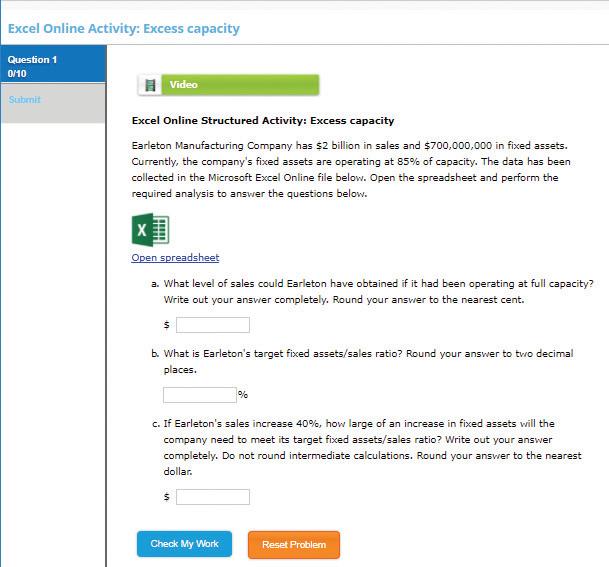

Microsoft Excel Online activities aimed at meeting students where they are with unparalleled support and immediate feedback
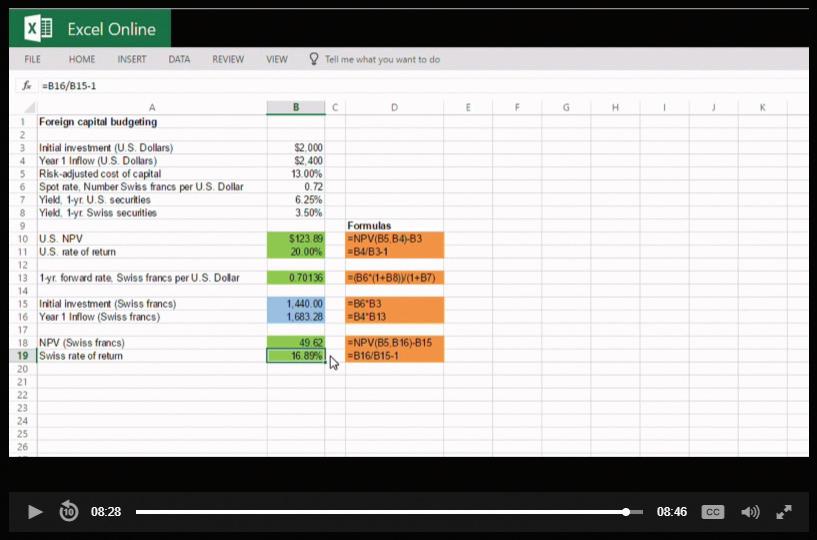
c alculation
s t E ps and Exc E l s olutions
Each activity offers configurable displays that include the correct answers, the manual calculation steps, and an Excel solution (with suggested formulas) that matches the exact version of the problem the student received. Students can check their work against the correct solution to identify improvement areas. Instructors always have access to review the student’s answers and Excel work from the MindTap progress app to better assist in error analysis and troubleshooting.

Exc E l v id E o t ips
Each activity includes a walkthrough video of a similar problem being worked in Excel Online to offer suggested formulas to use for solving the problem. It also offers tips and strategies, which assist in understanding the underlying financial concepts while working within Excel.

Help students prepare for exam success with Adaptive Test Prep, only available in MindTap

a daptiv E wh E r E it counts
The new Adaptive Test Prep App helps students prepare for test success by allowing them to generate multiple practice tests across chapters until they have confidence they have mastered the material.
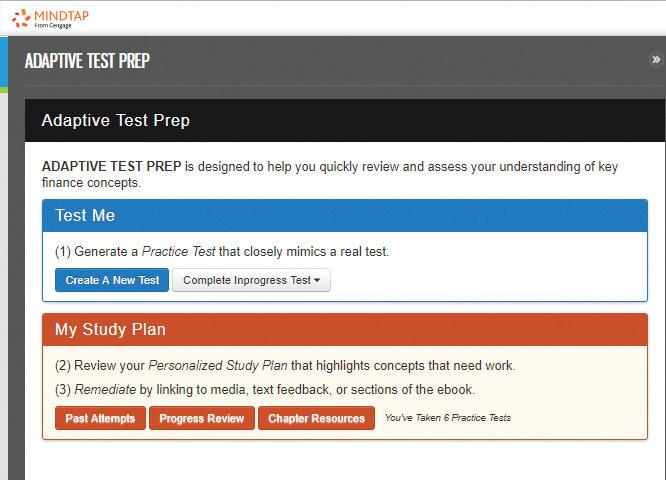

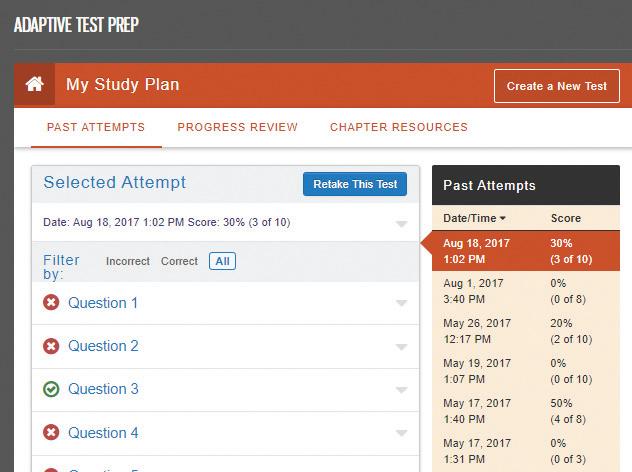

The adaptive test program grades practice tests and indicates the areas that have or have not been mastered. Students are presented with an Adaptive Study Plan that takes them directly to the pertinent pages in the text where the practice question materials are referenced.




F EE dback is kE y
Students also receive robust explanations of the problems to assist in further understanding. Many of the quantitative test questions feature video feedback that offers students step-by-step instruction to reinforce their understanding and bolster their confidence.

Getting Down the Basics
is Important

In order for you to take students further into the applications of finance, it’s important that they have a firm handle on the basic concepts and methods used. In MindTap for Intermediate Financial Management, we provide students with just-in-time tools that—coupled with your guidance—ensure that they build a solid foundation.
p r E paring F or Financ E
Students are more confident and prepared when they have the opportunity to brush up on their knowledge of the prerequisite concepts required to be successful in finance. Tutorials/problems are available to review prerequisite concepts that students should know. Topics covered include Accounting, Economics, Mathematics, and Statistics, as well as coverage of various Financial Calculators and Excel.


WHY IS THIS IMPORTANT TO ME?
For many students, the idea of taking finance is intimidating. Beyond that, students report that they become more engaged with the course material when they see its relevance in business. The “Why is this important to me?” activity asks the student to complete a short selfassessment activity to demonstrate how they may already have personal knowledge about the important finance concepts they will learn in the chapter material. It is intended to help the student, especially the non-finance major, better understand the relevance in the financial concepts they will learn.

conc E pt c lips
Embedded throughout the new interactive MindTap Reader, Concept Clips present key finance topics to students in an entertaining and memorable way via short animated video clips. These video animations provide students with auditory and visual representation of the important terminology for the course.

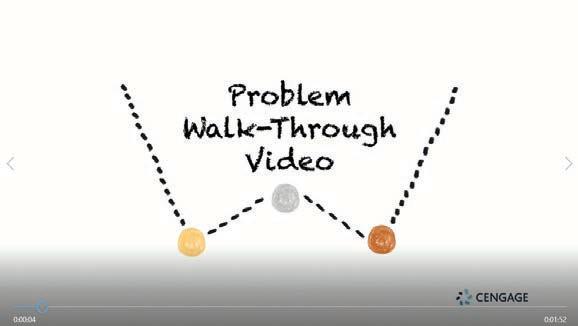
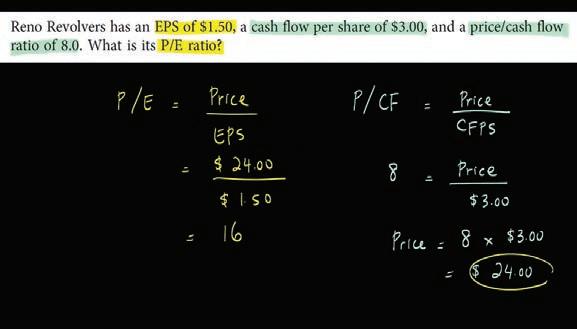

p robl E m walk- t hrough vid E os
Embedded in the interactive MindTap Reader and linked to select problems in MindTap, Problem Walk-Through Videos provide step-by-step instructions designed to walk students through solving a problem from start to finish. Students can play and replay the tutorials as they work through homework assignments or prepare for quizzes and tests—almost as though they had you by their side the whole time. Ideal for homework, study outside the classroom, or distance learning, Problem Walk-Through Videos extend your reach to give students extra instructional help whenever and wherever it’s most useful.

Customizable Course and Mobile On-the-Go study tools based on YOUR Needs
MindTap for Intermediate Financial Management, 13e offers features that allow you to customize your course based on the topics you cover.
lE arning path c ustomization
The learning path is structured by chapter so you can easily hide activities you wish to not cover, or change the order to better align with your course syllabus. RSS feeds and YouTube links can easily be added to the learning path or embedded directly within the MindTap Reader.

MindTap Mobile Empower students to learn on their terms—anytime, anywhere, on- or off-line.

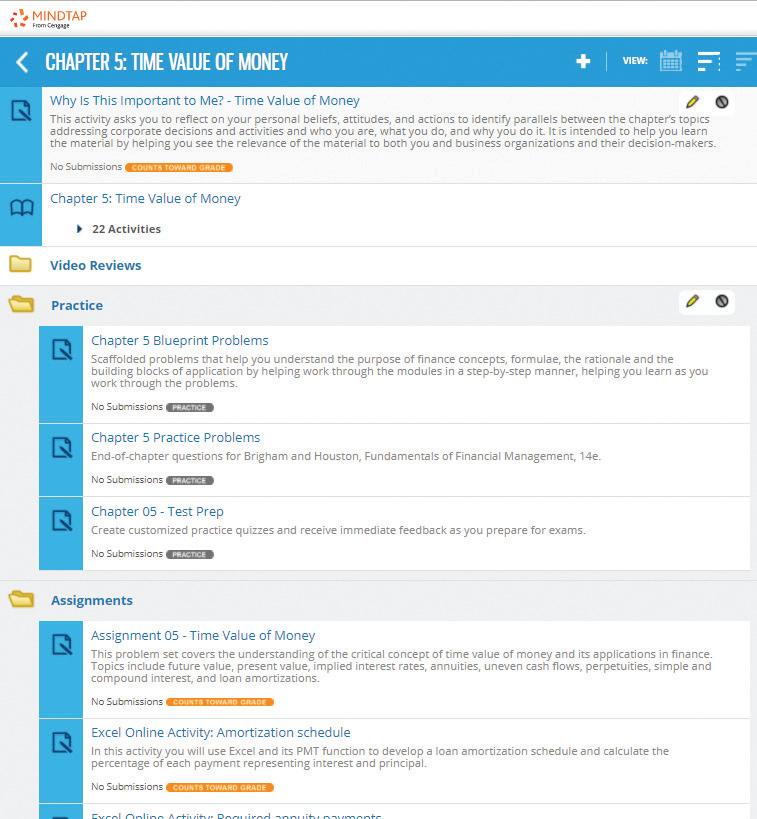
m indtap e r E ad E r
Provides Convenience

Students can read their full course eBook on their smartphone. This means they can complete reading assignments anyplace, anytime. They can take notes, highlight important passages, and have their text read aloud, whether they are on- or off-line.

Flashcards and Quizzing
Cultivate Confidence and Elevate Outcomes
Students have instant access to readymade flashcards specific to their course. They can also create flashcards tailored to their own learning needs. Study games present a fun and engaging way to encourage recall of key concepts. Students can use pre-built quizzes or generate a self-quiz from any flashcard deck.
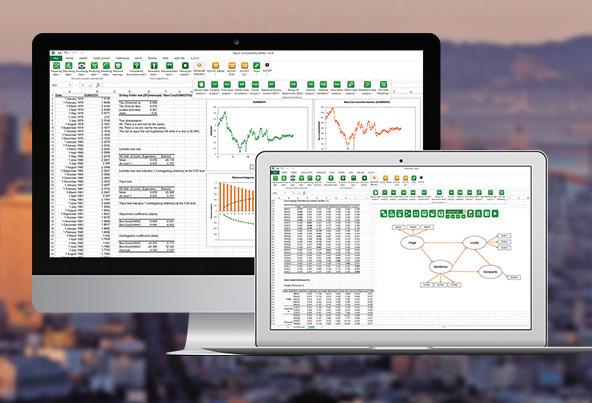

n oti F ications
Keep Students Connected
Students want their smartphones to help them remember important dates and milestones— for both the social and academic parts of their lives. The MindTap Mobile App pushes course notifications directly to them, making them more aware of what’s ahead with:
Due date reminders
Changes to activity due dates, score updates, and instructor comments
Messages from their instructor
Technical announcements about the platform

t h E g rad E book
Keep Students Motivated Students can instantly see their grades and how they are doing in the course. If they didn’t do well on an assignment, they can implement the flashcards and practice quizzes for that chapter.


LMS Integration
Cengage’s LMS Integration is designed to help you seamlessly integrate our digital resources within your institution’s Learning Management System (LMS).

LMS integration is available with the Learning Management Systems instructors use most. Our integrations work with any LMS that supports IMS Basic LTI Open Standards. Enhanced features, including grade synchronization, are the result of active collaborations with our LMS partners.

c r E at E a s E aml E ss us E r E xp E ri E nc E
With LMS Integration, your students are ready to learn on the first day of class. In just a few simple steps, both you and your students can access Cengage resources using a LMS login.

cont E nt customization with d EE p linking
Focus student attention on what matters most. Use our Content Selector to create a unique learning path that blends your content with links to learning activities, assignments, and more.

automatic grad E synchronization*
Need to have your course grades recorded in your LMS gradebook? No problem. Simply select the activities you want synched, and grades will automatically be recorded in your LMS gradebook.
* Grade synchronization is currently available with Blackboard, BrightSpace (powered by D2L), Canvas, and Angel 8.


WeB CHaPters & WeB extensions
students: Access the Web Chapters and Web Extensions by visiting www .cengagebrain.com, searching ISBN 9781285850030, and clicking “Access Now” under “Study Tools” to go to the student textbook companion site.
instructors: Access the Web Chapters, Web Extensions, and other instructor resources by going to www.cengage.com/login, logging in with your faculty account username and password, and using ISBN 9781285850030 to search for and to add resources to your account “Bookshelf.”

Preface xxvi Part I Fundamental ConCepts oF
1
1 An Overview of Financial Management and the Financial Environment 2
Beginning-of-Chapter Questions 3
i ntroduction 3
How to u se this text 4
the Corporate l ife Cycle 4
Governing a Corporation 10
Box: Be Nice with a B-Corp 12
Box: Taxes and Whistleblowing 14
a n o verview of Financial m arkets 14
Claims on Future Cash Flows: types of Financial s ecurities 16
Claims on Future Cash Flows: the r equired r ate of r eturn (the Cost of m oney) 21
Financial m arkets 26
o verview of the u. s. s tock m arkets 29
trading in the m odern s tock m arkets 31
Finance and the Great r ecession of 2007 40
Box: Anatomy of a Toxic Asset 47
the Big p icture 51
e-Resources 52
Summary 52
2 Risk and Return: Part I 56
Beginning-of-Chapter Questions 56
i nvestment r eturns and r isk 57
Box: Intrinsic Value, Risk, and Return 58
m easuring r isk for d iscrete d istributions 59
r isk in a Continuous d istribution 63
Box: What Does Risk Really Mean? 65
u sing Historical d ata to e stimate r isk 65
Box: The Historic Trade-Off Between Risk and Return 68
r isk in a portfolio Context 69
the r elevant r isk of a s tock: the Capital a sset p ricing m odel (C apm ) 73
Box: The Benefits of Diversifying Overseas 80
the r elationship between r isk and r eturn in the Capital a sset p ricing m odel 81
the e fficient m arkets Hypothesis 89
Box: Another Kind of Risk: The Bernie Madoff Story 90
the Fama-French three-Factor m odel 94
Behavioral Finance 99
the C apm and m arket e fficiency: i mplications for Corporate m anagers and i nvestors 102
Summary 103
3 Risk and Return: Part II 112
Beginning-of-Chapter Questions 112
Box: Intrinsic Value, Risk, and Return 113
e fficient portfolios 114
Choosing the o ptimal portfolio 118
the Basic a ssumptions of the Capital a sset p ricing m odel 122
the Capital m arket l ine and the s ecurity m arket l ine 123
Box: Skill or Luck? 128
Calculating Beta Coefficients 128
e mpirical tests of the C apm 137
a rbitrage p ricing theory 140
Summary 143 4 Bond Valuation 149
Beginning-of-Chapter Questions 149
Box: Intrinsic Value and the Cost of Debt 150
Who i ssues Bonds? 150
Box: Betting With or Against the U.S. Government: The Case of Treasury Bond
Credit Default Swaps 152
Key Characteristics of Bonds 152
Bond Valuation 157
Changes in Bond Values o ver time 162
Box: Chocolate Bonds 165
Bonds with s emiannual Coupons 165
Bond Yields 166
the p re- tax Cost of d ebt: d eterminants of m arket
i nterest r ates 170
the r isk-Free i nterest r ate: n ominal (r rF) and r eal (r*) 171
the i nflation p remium ( ip ) 172
the m aturity r isk p remium ( mrp ) 175
the d efault r isk p remium ( drp ) 178
Box: The Great Recession of 2007 180
Box: The Great Recession of 2007 182
Box: The Few, the Proud, the . . . AAARated Companies! 184
Box: The Great Recession of 2007 185
the l iquidity p remium ( lp ) 185
the term s tructure of i nterest r ates 186
Financing with Junk Bonds 188
Bankruptcy and r eorganization 188
Summary 190
5 Financial Options 199
Beginning-of-Chapter Questions 199
Box: The Intrinsic Value of Stock Options 200
o verview of Financial o ptions 200
Box: Financial Reporting for Employee Stock Options 204
the s ingle- period Binomial o ption p ricing a pproach 204
the s ingle- period Binomial o ption p ricing
Formula 210
the multi-period Binomial option pricing model 213
the Black-scholes option pricing model ( opm ) 215
Box: Taxes and Stock Options 221
the Valuation of p ut o ptions 222
a pplications of o ption p ricing in Corporate Finance 224
Summary 227
6 Accounting for Financial
Management 231
Beginning-of-Chapter Questions 231
Box: Intrinsic Value, Free Cash Flow, and Financial Statements 232
Financial s tatements and r eports 233 the Balance s heet 233
Box: The Great Recession of 2007 237
the i ncome s tatement 237
s tatement of s tockholders’ e quity 240
Box: Financial Analysis on the Web 241
s tatement of Cash Flows 241
Box: Filling in the GAAP 245
n et Cash Flow 245
Free Cash Flow: the Cash Flow a vailable for d istribution to i nvestors 246
Box: Sarbanes-Oxley and Financial Fraud 252
performance e valuation 255
the Federal i ncome tax s ystem 261
Box: When It Comes to Taxes, History Repeats and Repeals Itself! 263
Summary 267
7 Analysis of Financial Statements 279
Beginning-of-Chapter Questions 279
Box: Intrinsic Value and Analysis of Financial Statements 280
Financial a nalysis 281 l iquidity r atios 282
a sset m anagement r atios 285
Box: The Great Recession of 2007 288
d ebt m anagement r atios 289
p rofitability r atios 293
Box: The World Might Be Flat, but Global Accounting Is Bumpy! The Case of IFRS versus FASB 294
m arket Value r atios 296
trend a nalysis, Common s ize a nalysis, and percentage Change a nalysis 300
tying the r atios together: the d u pont e quation 303
Comparative r atios and Benchmarking 304
u ses and l imitations of ratio analysis 306
Box: Ratio Analysis on the Web 307
l ooking beyond the n umbers 307
Summary 308
Part ii
Corporate Valuation
321
8 Basic Stock Valuation 322
Beginning-of-Chapter Questions 322
Box: Corporate Valuation and Stock Prices 323
l egal r ights and p rivileges of Common
s tockholders 324
types of Common s tock 325
s tock m arket r eporting 326
Valuing Common s tocks— i ntroducing the Free Cash Flow (FCF) Valuation m odel 327
the Constant Growth m odel: Valuation When
e xpected Free Cash Flow Grows at a Constant r ate 332
the m ultistage m odel: Valuation when
e xpected s hort- term Free Cash Flow Grows at a n onconstant r ate 335
a pplication of the FCF Valuation m odel to m icro d rive 339
d o s tock Values r eflect l ong- term or s hort- term
Cash Flows? 347
Value-Based m anagement: u sing the Free Cash Flow Valuation m odel to i dentify Value d rivers 348
Why a re s tock p rices s o Volatile? 351
Valuing Common s tocks with the d ividend Growth m odel 352
the m arket m ultiple m ethod 359
Comparing the FCF Valuation m odel, the d ividend Growth m odel, and the m arket m ultiple m ethod 360
p referred s tock 362
Summary 363
9 Corporate Valuation and Financial
Planning 375
Beginning-of-Chapter Questions 375
Box: Corporate Valuation and Financial Planning 376
o verview of Financial p lanning 377
Financial p lanning at m icro d rive i nc. 378
Forecasting o perations 379
e valuating m icro d rive’s s trategic i nitiatives 385
p rojecting m icro d rive’s Financial s tatements 387 a nalysis and s election of a s trategic p lan 392 the CF o ’s m odel 395
a dditional Funds n eeded ( a F n ) e quation m ethod 396
Forecasting When the r atios Change 400 Summary 404
10 Corporate Governance 416
Beginning-of-Chapter Questions 416
Box: Corporate Governance and Corporate Valuation 417
a gency Conflicts 417
Corporate Governance 421
Box: Would the U.S. Government Be an Effective Board Director? 425
Box: The Dodd-Frank Act and “Say on Pay” 428
Box: The Sarbanes-Oxley Act of 2002 and Corporate Governance 429
Box: International Corporate Governance 432
e mployee s tock o wnership p lans ( esop s) 434
Summary 437
11 Determining the Cost of Capital 440
Beginning-of-Chapter Questions 440
Box: Corporate Valuation and the Cost of Capital 441
The Weighted Average Cost of Capital 442
Choosing Weights for the Weighted Average Cost of Capital 443
After-Tax Cost of Debt: r d(1 T) and r std(1 T) 445
Box: How Effective Is the Effective Corporate Tax Rate? 448
Cost of Preferred Stock, r ps 451
Cost of Common Stock: The Market Risk Premium, RP M 452
Using the CAPM to Estimate the Cost of Common Stock, r s 456
Using the Dividend Growth Approach to Estimate the Cost of Common Stock 459
The Weighted Average Cost of Capital (WACC) 461
Box: Global Variations in the Cost of Capital 463
Adjusting the Cost of Equity for Flotation Costs 464
Privately Owned Firms and Small Businesses 466
The Divisional Cost of Capital 468
Estimating the Cost of Capital for Individual Projects 470
Managerial Issues and the Cost of Capital 471 Summary 473
Part III
PROjECT VAlUATIOn 485
12 Capital Budgeting: Decision Criteria 486
Beginning-of-Chapter Questions 486
Box: Corporate Valuation and Capital Budgeting 487
An Overview of Capital Budgeting 487
The First Step in Project Analysis 489
n et Present Value ( n PV) 490
Internal Rate of Return (IRR) 493
Modified Internal Rate of Return (MIRR) 500
Profitability Index (PI) 503
Payback Period 504
How to Use the Different Capital Budgeting Methods 506
Other Issues in Capital Budgeting 509 Summary 516
13 Capital Budgeting: Estimating Cash Flows and Analyzing Risk 527
Beginning-of-Chapter Questions 527
Box: Project Valuation, Cash Flows, and Risk Analysis 528
Identifying Relevant Cash Flows 528
Analysis of an Expansion Project 533
Box: Mistakes in Cash Flow Estimation
Can Kill Innovation 541
Risk Analysis in Capital Budgeting 542
Measuring Stand-Alone Risk 543
Sensitivity Analysis 544
Scenario Analysis 547
Monte Carlo Simulation 551
Project Risk Conclusions 554
Replacement Analysis 555
Real Options 557
Phased Decisions and Decision Trees 559
Summary 563
Appendix 13A Tax Depreciation 576
14 Real Options 579
Beginning-of-Chapter Questions 580
Valuing Real Options 580
The Investment Timing Option: An Illustration 581
The Growth Option: An Illustration 592
Concluding Thoughts on Real Options 598 Summary 599
15 Distributions to Shareholders: Dividends and Repurchases 606
Beginning-of-Chapter Questions 606
An Overview of Cash Distributions 607
Box: Uses of Free Cash Flow: Distributions to Shareholders 608
p rocedures for Cash d istributions 610
Cash d istributions and Firm Value 614
Clientele e ffect 617
s ignaling Hypothesis 619
i mplications for d ividend s tability 620
Box: The Great Recession of 2007 621
s etting the target d istribution l evel: the r esidual d istribution m odel 622
the r esidual d istribution m odel in p ractice 624
a tale of two Cash d istributions: d ividends versus s tock r epurchases 625
the pros and Cons of dividends and repurchases 635
Box: Dividend Yields around the World 636
o ther Factors i nfluencing d istributions 637
s ummarizing the d istribution policy d ecision 638
s tock s plits and s tock d ividends 640
Box: The Great Recession of 2007 641
d ividend r einvestment p lans 643
Summary 644
16 Capital Structure Decisions 652
Beginning-of-Chapter Questions 652
Box: Corporate Valuation and Capital Structure 653
a n o verview of Capital s tructure 654
Business r isk and Financial r isk 655
Capital s tructure theory: the m odigliani and m iller
m odels 660
Box: Yogi Berra on the MM Proposition 663
Capital s tructure theory: Beyond the m odigliani and m iller m odels 665
Capital s tructure e vidence and i mplications 670
e stimating the o ptimal Capital s tructure 675
a natomy of a r ecapitalization 682
Box: The Great Recession of 2007 686
r isky d ebt and e quity as an o ption 687
m anaging the m aturity s tructure of d ebt 690
Summary 693
17 Dynamic Capital Structures and Corporate Valuation 701
Beginning-of-Chapter Questions 701
Box: Corporate Valuation and Capital Structure Decisions 702
the a djusted p resent Value ( ap V)
a pproach 703
the m odigliani and m iller m odels 706
the Compressed a djusted p resent Value (C ap V)
m odel 707
the Free Cash Flow to e quity (FCF e )
m odel 709
m ultistage Valuation When the Capital s tructure is s table 710
i llustration of the three Valuation a pproaches for a Constant Capital s tructure 714
a nalysis of a d ynamic Capital s tructure 720
Summary 722
Part V taC tiC al FinanCinG deCisions 727
18 Initial Public Offerings, Investment Banking, and Capital Formation 728
Beginning-of-Chapter Questions 728
the Financial l ife Cycle of a s tart- u p Company 729
the d ecision to Go p ublic 730
the p rocess of Going p ublic: a n i nitial p ublic o ffering 732
e quity Carve- o uts: a s pecial type of ipo 744
o ther Ways to r aise Funds in the Capital m arkets 745
Box: Where There’s Smoke, There’s Fire 750
i nvestment Banking a ctivities 753
Box: What Was the Role of Investment Banks? 755
the d ecision to Go p rivate 756
Summary 758
19 Lease Financing 765
Beginning-of-Chapter Questions 765
Types of Leases 766
Tax Effects 769
Financial Statement Effects 770
Evaluation by the Lessee 773
Evaluation by the Lessor 778
Other Issues in Lease Analysis 781
Box: What You Don’t Know Can Hurt You! 782
Box: Lease Securitization 784
Other Reasons for Leasing 785 Summary 787
20 Hybrid Financing: Preferred Stock, Warrants, and Convertibles 794
Beginning-of-Chapter Questions 794
Preferred Stock 795
Box: The Romance Had No Chemistry, but It Had a Lot of Preferred Stock! 797
Box: Hybrids Aren’t Only for Corporations 799
Warrants 801
Convertible Securities 807
A Final Comparison of Warrants and Convertibles 815
Reporting Earnings When Warrants or Convertibles Are Outstanding 816 Summary 817
21 Supply Chains and Working Capital Management 826
Beginning-of-Chapter Questions 826
Box: Corporate Valuation and Working Capital Management 827
Overview of Supply Chain Management 828
Using and Financing Operating Current Assets 830
The Cash Conversion Cycle 834
Box: Some Firms Operate with Negative Working Capital! 840
Inventory Management 840
Receivables Management 842
Box: Supply Chain Finance 844
Accruals and Accounts Payable (Trade Credit) 846
Box: A Wag of the Finger or Tip of the Hat? The Colbert Report and Small Business Payment Terms 847
The Cash Budget 850
Cash Management and the Target Cash Balance 854
Box: Use It or Lose Part of It: Cash Can Be Costly! 855
Cash Management Techniques 856
Box: Your Check Isn’t in the Mail 859
Managing Short-Term Investments 860
Short-Term Bank Loans 861
Commercial Paper 865
Use of Security in Short-Term Financing 866 Summary 867
22 Providing and Obtaining Credit 880
Beginning-of-Chapter Questions 880
Credit Policy 881
Monitoring Receivables with the Uncollected Balances Schedule 884
Analyzing Proposed Changes in Credit Policy 888
Analyzing Proposed Changes in Credit Policy: Incremental Analysis 891
The Cost of Bank Loans 898
Choosing a Bank 902 Summary 904
23 Other Topics in Working Capital Management 915
Beginning-of-Chapter Questions 915
The Concept of Zero Working Capital 916
Setting the Target Cash Balance 917
Inventory Control Systems 923
Accounting for Inventory 924
the e conomic o rdering Quantity ( eo Q)
m odel 927
eo Q m odel e xtensions 934
Summary 940
Part V ii
speCial topiCs 945
24 Enterprise Risk Management 946
Beginning-of-Chapter Questions 946
Box: Corporate Valuation and Risk Management 947
r easons to m anage r isk 948
a n o verview of e nterprise r isk
m anagement 950
a Framework for e nterprise r isk
m anagement 953
Categories of r isk e vents 956
Foreign e xchange (FX) r isk 958
Commodity p rice r isk 959
i nterest r ate r isk 964
Box: The Game of Truth or LIBOR 970
p roject s election r isks 973
m anaging Credit r isks 976
r isk and Human s afety 979
Summary 980
25 Bankruptcy, Reorganization, and Liquidation 985
Beginning-of-Chapter Questions 985
Financial d istress and i ts Consequences 986
i ssues Facing a Firm in Financial d istress 988
s ettlements without Going through Formal Bankruptcy 989
Federal Bankruptcy l aw 991
r eorganization in Bankruptcy (Chapter 11 of Bankruptcy Code) 992
l iquidation in Bankruptcy 1003
Box: A Nation of Defaulters? 1007
a natomy of a Bankruptcy: transforming the G m Corporation into the G m Company 1008
o ther m otivations for Bankruptcy 1010
s ome Criticisms of Bankruptcy l aws 1010
Summary 1011
26 Mergers and Corporate Control
1020
Beginning-of-Chapter Questions 1020
r ationale for m ergers 1021
types of m ergers 1024
l evel of m erger a ctivity 1025
Hostile versus Friendly takeovers 1026
m erger r egulation 1027
o verview of m erger a nalysis 1029
e stimating a target’s Value 1030
s etting the Bid p rice 1034
Who Wins: the e mpirical e vidence 1036
the r ole of i nvestment Bankers 1038
o ther Business Combinations 1039
d ivestitures 1041
tax treatment of m ergers 1042
Financial r eporting for m ergers 1046
Box: Tempest in a Teapot? 1048
Summary 1049
27 Multinational Financial Management 1056
Beginning-of-Chapter Questions 1056
Box: Corporate Valuation in a Global Context 1057
m ultinational, or Global, Corporations 1058
m ultinational versus d omestic Financial
m anagement 1059
Box: Meet Me at the Car Wash 1060
e xchange r ates 1061
the Fixed e xchange r ate s ystem 1067
Floating e xchange r ates 1067
Government i ntervention in Foreign e xchange
m arkets 1073
o ther e xchange r ate s ystems: n o l ocal Currency, pegged r ates, and m anaged Floating r ates 1074
trading in Foreign e xchange: s pot r ates and Forward r ates 1078
Interest Rate Parity 1079
Purchasing Power Parity 1082
Box: Hungry for a Big Mac? Go to Ukraine! 1083
Inflation, Interest Rates, and Exchange Rates 1083
International Money and Capital Markets 1084
Box: Stock Market Indices around the World 1087
Multinational Capital Budgeting 1090
Box: Death and Taxes 1091
International Capital Structures 1095
Multinational Working Capital Management 1097
Summary 1100
APPEndIxES
Appendix A Values of the Areas under the Standard Normal Distribution Function 1109
Appendix B Answers to End-of-Chapter Problems 1111
Appendix C Selected Equations 1121
GloSSA ry 1139
NAmE INDE x 1187
SuBjEC t INDE x 1191
WEB CHAPtErS & WEB E xtENSIoNS
Students: Access the Web Chapters and Web Extensions by visiting www.cengagebrain.com, searching ISBn 9781337395083, and clicking “Access now” under “Study Tools” to go to the student textbook companion site.
Instructors: Access the Web Chapters, Web Extensions, and other instructor resources by going to www .cengage.com/login , logging in with your faculty account username and password, and using ISB n 9781337395083 to search for and to add resources to your account “Bookshelf.”
Web Chapters
28 Time Value of Money
29 Basic Financial Tools: A Review
30 Pension Plan Management
31 Financial Management in n ot-for-Profit Businesses
Web Extensions
Web Extension 1A An Overview of d erivatives
Web Extension 1B An Overview of Financial Institutions
Web Extension 2A Continuous Probability d istributions
Web Extension 2B Estimating Beta with a Financial Calculator
Web Extension 4A A Closer Look at Zero Coupon, Other OI d Bonds, and Premium Bonds
Web Extension 4B A Closer Look at TIPS: Treasury Inflation-Protected Securities
Web Extension 4C A Closer Look at Bond Risk: d uration
Web Extension 4 d The Pure Expectations Theory and Estimation of Forward Rates
Web Extension 6A The Federal Income Tax System for Individuals
Web Extension 8A d erivation of Valuation Equations
Web Extension 11A The Cost of Equity in the nonconstant dividend Growth Model with Repurchases
Web Extension 12A The Accounting Rate of Return (ARR)
Web Extension 13A Certainty Equivalents and Risk-Adjusted d iscount Rates
Web Extension 14A The Abandonment Real Option
Web Extension 14B Risk- n eutral Valuation
Web Extension 16A d egree of Leverage
Web Extension 16B Capital Structure Theory: Arbitrage Proofs of the Modigliani-Miller Theorems
Web Extension 17A Projecting Consistent d ebt and Interest Expenses
Web Extension 17B Bond Refunding
Web Extension 18A Rights Offerings
Web Extension 19A Percentage Cost Analysis
Web Extension 19B Leasing Feedback
Web Extension 19C Leveraged Leases
Web Extension 19D Accounting for Leases
Web Extension 20A Calling Convertible Issues
Web Extension 21A Secured Short-Term Financing
Web Extension 21B Supply Chain Finance
Web Extension 25A Multiple Discriminant Analysis
Web Extension 28A The Tabular Approach
Web Extension 28B Derivation of Annuity Formulas
Web Extension 28C Continuous Compounding
Preface

web
students: Access the Intermediate Financial Management 13e companion site and online student resources by visiting www.cengagebrain .com, searching ISBN 9781285850030 and clicking “Access Now” under “Study Tools” to go to the student textbook companion site.
instructors: Access the Intermediate Financial Management 13e companion site and instructor resources by going to www.cengage .com, logging in with your faculty account username and password, and using ISBN 9781285850030 to reach the site through your account “Bookshelf.”
Much has happened in finance recently. Years ago, when the body of knowledge was smaller, the fundamental principles could be covered in a one-term lecture course and then reinforced in a subsequent case course. This approach is no longer feasible. There is simply too much material to cover in one lecture course.
As the body of knowledge expanded, we and other instructors experienced increasing difficulties. Eventually, we reached these conclusions:
The introductory course should be designed for all business students, not just for finance majors, and it should provide a broad overview of finance. Therefore, a text designed for the first course should cover key concepts but avoid confusing students by going beyond basic principles.
Finance majors need a second course that provides not only greater depth on the core issues of valuation, capital budgeting, capital structure, cost of capital, and working capital management but also covers such special topics as mergers, multinational finance, leasing, risk management, and bankruptcy.
This second course should also utilize cases that show how finance theory is used in practice to help make better financial decisions.
When we began teaching under the two-course structure, we tried two types of existing books, but neither worked well. First, there were books that emphasized theory, but they were unsatisfactory because students had difficulty seeing the usefulness of the theory and consequently were not motivated to learn it. Moreover, these books were of limited value in helping students deal with cases. Second, there were books designed primarily for the introductory MBA course that contained the required material, but they also contained too much introductory material. We eventually concluded that a new text was needed, one designed specifically for the second financial management course, and that led to the creation of Intermediate Financial Management, or IFM for short.
The Next Level: Intermediate Financial Management
In your introductory finance course, you learned basic terms and concepts. However, an intro course cannot make you “operational” in the sense of actually “doing” financial management. For one thing, introductory courses necessarily focus on individual chapters and even sections of chapters, and first-course exams generally consist of relatively simple problems plus short-answer questions. As a result, it is hard to get a good sense of how the various parts of financial management interact with one another. Second, there is not enough time in the intro course to allow students to set up and work out realistic problems, nor is there time to delve into actual cases that illustrate how finance theory is applied in practice.
Now it is time to move on. In Intermediate Financial Management, we first review materials that were covered in the introductory course, then take up new
material. The review is absolutely essential because no one can remember everything that was covered in the first course, yet all of the introductory material is essential for a good understanding of the more advanced material. Accordingly, we revisit topics such as the net present value (NPV) and internal rate of return (IRR) methods, but now we delve into them more deeply, considering how to streamline and automate the calculations, how to obtain the necessary data, and how errors in the data might affect the outcome. We also relate the topics covered in different chapters to one another, showing, for example, how cost of capital, capital structure, dividend policy, and capital budgeting combine forces to affect the firm’s value.
Also, because spreadsheets such as Excel, not financial calculators, are used for most real-world calculations, students need to be proficient with spreadsheets so that they will be more marketable after graduation. Therefore, we explain how to do various types of financial analysis with Excel. Working with Excel has, in fact, two important benefits: (1) a knowledge of Excel is important in the workplace and the job market, and (2) setting up spreadsheet models and analyzing the results also provide useful insights into the implications of financial decisions.
Corporate Valuation as a Unifying Theme
Management’s goal is to maximize firm value. Job candidates who understand the theoretical underpinning for value maximization and have the practical skills to analyze business decisions within this context make better, more valuable employees. Our goal is to provide you with both this theoretical underpinning and a practical skill set. To this end we have developed several integrating features that will help you to keep the big picture of value maximization in mind while you are honing your analytical skills:
Every chapter starts off with a series of integrating Beginning of Chapter Questions that will help you place the material in the broader context of financial management.
Most chapters have a valuation graphic and description that show exactly how the material relates to corporate valuation.
Each chapter has a Mini Case that provides a business context for the material. Each chapter has an Excel spreadsheet Tool Kit that steps through all the calculations in the chapter.
Each chapter has a spreadsheet Build-a-Model that steps you through constructing an Excel model to work problems. We’ve designed these features and tools so that you’ll finish your course with the skills to analyze business decisions and the understanding of how these decisions impact corporate value.
Design of the Book
Based on more than 30 years working on Intermediate Financial Management and teaching the advanced undergraduate financial management course, we have concluded that the book should include the following features: Completeness. Because IFM is designed for finance majors, it should be selfcontained and suitable for reference purposes. Therefore, we specifically and
Another random document with no related content on Scribd:
Sayre places so much confidence in the power of this elastic tension to overcome contractions that he rarely resorts to tenotomy in the treatment of paralytic talipes. Hueter, however,180 considers tenotomy much the speediest, and therefore the most desirable, way of removing contractions.181
180 Loc. cit.
181 Loc. cit.
Seeligmüller quotes with approval Böttger's method for the treatment of deformities, where the weight of the body is utilized to stretch the retracted tendons. Thus, for talipes equino-varus an over-reduction is effected under ether, and the foot forced into a position of moderate calcaneo-valgus. In this position it is retained by the immediate application of a plaster or silica bandage. After this has hardened the child should be encouraged to walk in the mould, with the addition of felt shoes having a slanting sole that is thickened like a wedge at the inner side of the foot and strapped on like a skate. Then, during the act of walking the body tends to constantly force down the heel and thus stretch the retracted tendo Achillis, while the bandage and felt sole (acting like a splint) prevent the inner side of the foot from slipping up.
For talipes valgus the method is analogous, but the foot is forced into an equino-varus position, so that the tendo Achillis is artificially shortened, and ultimately becomes a rigid band, capable, in spite of the sural paralysis, of sustaining the heel.
A cause of relapse in talipes not unfrequently overlooked is the presence of even slight contractions of the hip- and knee-joints. These by shortening the limb tend to the production of equinus, since the foot points itself in order to reach the ground. These contractions, whose rigidity is far inferior to that induced by chronic arthritis, may be overcome by forced extension under ether or gradually by manipulations, or by the weight-and-pulley apparatus, applied in the recumbent position, as in morbus coxarius. The obvious objection to the latter method is the confinement in bed which it necessitates in a child enjoying at the time perhaps robust general health.
The contraction once overcome, the limb must be placed in apparatus which shall both maintain suitable extension and assist in supporting the trunk during station and locomotion. The latter purpose is effected, as in apparatus for chronic joint diseases, by transferring the weight of the body to steel splints running up each side of the limb, the outer one as far as a girdle which encircles the hips; the inner to a band surrounding the upper part of the thigh. Thus is extended the support which in paralysis limited to the leg-muscles is given by the steel splints inserted in the side of the club-foot shoes.
In the simplest form of apparatus locomotion is expected to be accomplished by the action of muscles inserted above the seat of the paralysis. Thus, when the muscles passing over the ankle-joint are paralyzed, the foot is moved as a dead weight by means of the quadriceps extensor, popliteus, and hamstring muscles inserted at the upper extremity of the leg. If the quadriceps cruris is paralyzed, the rotators of the thigh, ilio-psoas, sartorius, and adductor muscles, passing from the pelvis to the thigh, and which are so frequently intact in atrophic paralysis, are enabled to move the limb if the weight of the body is borne by steel splints, if these be light and properly jointed at the hip, knees, and ankle.182
182 Or the joint of the knee may be kept locked while the patient walks, when extension of the limb is mainly required, during both the active and passive movements of locomotion, the necessary flexion being supplied at the hip and ankle. By means of a key the knee-joint can be flexed during the sitting positions.
But an important aid to locomotion may be obtained from the artificial muscles, whose elastic tension is of such value in overcoming contractions. The quadriceps extensor, the most frequently paralyzed, may be supplemented by an India-rubber band and chain passing down the front of the thigh from a point on the pelvic girdle corresponding to the anterior iliac spine to a point on a leg-band, imitating the tibial insertion of the quadriceps tendon. Analogous bands stretched on the posterior aspect of the thigh simulate the hamstring muscles. When the external rotators are paralyzed, the artificial muscle must stretch from the pelvic girdle to a band encircling the upper part of the thigh.
The action of these muscles, apart from their elastic tension of repose, is thus explained by Duchenne: When any effort is made to move a
paralyzed limb, the intact antagonists to the paralyzed muscles contract; thus, the flexors of the leg. But this contraction, being constantly opposed by the elastic tension of the artificial quadriceps, is restrained and gradual, instead of being brusque, jerking, and excessive, as it otherwise would be. This is the first result obtained. In the second place, contraction of the antagonist having ceased, the artificial muscle which has been stretched returns upon itself in virtue of its elasticity, and restores the limb to the position of normal equilibrium.
For the act of walking, however, the artificial quadriceps would require to be made tense enough to resist flexion, and thus keep the limb in extension. An artificial anterior tibial muscle, however, would require to yield to the intact gastrocnemius while the heel was being raised from the floor; then its elastic force should be sufficient to retract the point of the foot in dorsal flexion during the pendulum movement which passively swings the leg forward. The tension of the artificial muscle should therefore be so adjusted that it can only be overcome by the active contraction of the gastrocnemius, and at the moment of greatest tension, immediately after stretching, it should be able to quite overcome the gastrocnemius, then relatively183 relaxed.
183 We say relatively, believing that the simultaneous contraction of antagonist muscles has been well established as a constant normal phenomenon.
The anterior tibial, gastrocnemius, and many other of the artificial muscles devised by Duchenne are still in use in the modified form given to them by Barwell. On the other hand, the action of the long peroneus in pronating the foot, and which Duchenne imitated by an elaborate artificial tendon following the exact course of the natural one, is to-day generally supplemented by the jointed shoe and laced bandage.
In paralysis of all the muscles surrounding a joint, when the limb is placid and no retractions by adapted atrophy have taken place, the artificial muscles can only serve to oppose the malpositions which are threatened from mechanical influences.
In the upper extremities prothetic apparatus has been principally used for progressive muscular atrophy. Paralysis of the wrist extensors is perhaps the only case in which the artificial muscle is required in anterior
poliomyelitis. A string may be necessary to support the arm in paralysis of the deltoid, to avert luxation of the humerus.
Duchenne's ingenuity did not shrink from the difficult task of supplementing the muscles of the trunk. This he did by inserting the elastic spirals in corsets in a direction following that of the muscles paralyzed. Thus, a unilateral paralysis of the sacro-lumbalis may be met by a spiral splint running up one side of the spine; below, to the lateral posterior portion of a pelvic girdle. In bilateral paralysis two springs are used to antagonize the action of the abdominal muscles.
In Barwell's apparatus for the trunk184 India-rubber bands are again substituted for spiral springs. No attempt is made to imitate the direction of muscles, but the force is applied in any direction required to antagonize the pressure producing the deformity.185
184 Especially designed for habitual scoliosis, but applicable also to the paralytic deformity
185 Volkmann (loc. cit., p. 778) thinks that the force of Barwell's India-rubber straps, whether for scoliosis or club-foot apparatus, is inadequate, and much inferior to metallic springs.
It is always important to remember the rarity of scoliosis caused by spinal paralysis of the trunk-muscles, and the much greater frequency with which this deformity occurs as a consequence of the paralytic shortening of a leg. A high shoe, equalizing the length of the lower extremities, is then the simple and efficient remedy.
In cases of long standing, even when the scoliosis is due to this cause, certain muscles on the concave side of the curve may become so retracted and rigid as to require tenotomy Before this operation it is necessary to put the rigid muscles on the stretch as much as possible; and this may be done, if necessary, by means of Sayre's hanging apparatus. After this operation the spine may be straightened out with ease—an important distinction from advanced habitual scoliosis, where the alteration in the shape of the vertebræ defeats all attempts at rectification. The position may be maintained by elastic straps or corsets and by removing the condition which has led to the deformity.
Seeligmüller criticises too unfavorably the entire system of elastic tension in the prophylaxis and treatment of paralytic deformities. He quotes Duchenne's admission, that in certain cases traction upon rigidly-retracted
tissues becomes insupportably painful, and must be abandoned. It is in these cases that tenotomy becomes an indispensable preliminary to the use of apparatus. Sayre insists that the necessity for tenotomy is indicated when pressure on the rigid muscle is followed by instantaneous spasmodic contraction in the affected or neighboring muscles. He declares that such contractions indicate reflex irritations, show that the muscle has undergone structural change, and that any attempt to stretch or lengthen it would be followed by an excess of irritation and pain.
This explanation can hardly be accepted, since muscles, whether imperfectly or not at all paralyzed, which from position and adapted atrophy have become retracted, have necessarily undergone structural changes. The greater these changes, the greater the diminution of reflex excitability; and in any muscle completely paralyzed and degenerated this is entirely lost. If, however, the afferent nerves retain enough vitality, if the muscle be slightly paralyzed or altogether intact, then irritation of its tendon by stretching may serve to excite contractions in the belly of the muscle. The possibility of such spinal reflexes is demonstrated by the now familiar phenomenon of the tendon reflex in various spinal diseases.186 The contractions must be painful from the impediments offered to the progress of the contracting nerve, and from the exaggeratedly vicious position into which they tend to force the limb. Under these circumstances prothetic apparatus must be deferred until section of the tendons has been made.
186 “Passive muscular tension excites tonic contraction in a muscle, and this action may, in abnormal conditions, be excessive, as in the myelitic contractions (so-called tendon reflexes).... The afferent nerves commence in the fibrous tissues of the muscle, and seem to be especially stimulated by extension” (Gowers, On Epilepsy, 1881, p. 97).
DISEASE OF ONE LATERAL HALF OF THE SPINAL CORD.
BY H. D. SCHMIDT, M.D.
SYNONYMS.—Unilateral lesion of the spinal cord; Spinal hemiplegia and hemiparaplegia; Unilateral spinal paralysis.
INTRODUCTION.—This disease remained unnoticed until twenty years ago, when Brown-Séquard, observing that certain lesions of the spinal cord were accompanied by symptoms resembling those which he witnessed in animals after section of one lateral half of the cord, recognized it as a special affection. Although some of the accompanying phenomena of such a section had likewise been observed by Stilling, Budge, Eigenbrodt, Tuerk, Schiff, Von Bezold, and Van Kempen,1 nevertheless this whole group of symptoms, as belonging to the same disease, was first clearly recognized and anatomically demonstrated by Brown-Séquard.2 According to this physiologist, a section or a destruction of a small portion of a lateral half of the spinal cord in its cervical region gives rise to the following phenomena: namely, on the injured side is observed a paralysis of voluntary motion, of the muscular sense, and of the blood-vessels; the latter, manifesting itself by a greater supply of blood and a higher temperature of the parts, may continue to exist for some years. There is, furthermore, an increased sensibility of the trunk and extremity to touch, prick, heat, cold, electricity, etc., owing to vasomotor paralysis, though in some cases a slight anæsthesia may exist in a limited zone above the hyperæsthetic part, and also in certain parts of the arm, breast, and neck. Besides these symptoms, vasomotor paralysis of the corresponding side of the face and of the eye, manifested by an elevated temperature and sensibility, partial closure of the eyelid, contracted pupil, slight contraction of some of the muscles of the face, etc., may also be present. On the opposite side of the injury an anæsthesia of all kinds of sensation, excepting the muscular sense, is observed in both extremities; there is also an
absence of motor paralysis. The anæsthesia on this side is owing to the decussation of the sensory nerves in the spinal cord.
1 Eckhard, “Physiologie des Nervensystems,” in Handbuch der Physiologie, edited by L. Hermann, 2d part of vol. ii. p. 165.
2 “On Spinal Hemiplegia,” Lancet, Nov 7, 21, and Dec. 12, 26, 1868, reported in Virchow and Hirsch's Jahresbericht for the year 1868, vol. ii. p. 37.
If the hemisection of the cord is made in the dorsal region, the functional disturbances are limited to that part of the body below the point of division, and a hemiparaplegia, or paralysis of the corresponding lower extremity, will be the result.
From these facts it will be readily understood that a lesion occurring in any portion of one lateral half of the spinal cord of man must be followed by some or all of the above-mentioned symptoms, and that the phenomena produced by physiological experiments on animals constitute, in reality, the pathological basis of unilateral spinal paralysis in man. They will be more clearly understood by calling to mind the course of the musculo-motor, vaso-motor, and sensitive tracts in the spinal cord. Thus, the musculo-motor tracts, after having descended to the crura cerebri, cross one another in the pyramids of the medulla oblongata and adjoining upper portion of the spinal cord, forming the so-called decussation of the pyramids; they then descend through the spinal cord to supply the muscles of the same side of the body.3 A section of one lateral half of the cord therefore causes motor paralysis on the same side. The vaso-motor tracts remain uncrossed, and pass, each, through one lateral half of the cord to supply the vessels on the same side; some regions of the body are stated to make an exception to this rule. According to Brown-Séquard, the sensitive tracts conducting the different kinds of sensation, with the exception of the muscular sense, on the contrary, cross over to the opposite half of the spinal cord soon after their entrance into it, and thence pursue their further course to the brain. A section of one lateral half of the cord, therefore, will be followed by a loss of sensation of touch, pain, heat, tickling, etc. on the other side of the body.
3
Though, in the majority of cases, a complete decussation of the motor tracts probably takes place in the pyramids, the researches of Flechsig have shown (Die Leitungsbahnen im Gehirn und Rückenmark des Menschen, p. 273) that there are a number of others in which the decussation is not complete, but where a part of these tracts passes to the spinal marrow uncrossed on the inner surface of the anterior white columns.
The symptoms above mentioned must of course vary according to the extent, the intensity, and the particular nature of the lesion, as well as the height at which it is located in the spinal cord.
DEFINITION.—The chief characters of unilateral spinal disease are motor paralysis, hemiplegia, or hemiparaplegia, paralysis of the muscular sense and of the blood-vessels on the side of the lesion, and paralysis of sensation with preservation of the muscular sense on the other side of the body These symptoms may vary, and be accompanied by other phenomena according to the particular seat, extent, and depth of the lesion.
SYMPTOMS.—According to the nature of the lesion, the symptoms of unilateral disease of the spinal cord may be developed suddenly, as, for instance, when caused by traumatic injuries; or in a gradual and slow manner, when they may be preceded by premonitory symptoms, such as vertigo, pain on the side of the lesion, etc. The most prominent clinical phenomena, as before mentioned, are motor paralysis on the side of the lesion, and anæsthesia on the opposite side of the body. The motor paralysis on the side of the lesion may, according to the seat of the latter, manifest itself in either the form of a hemiplegia or hemiparaplegia, and even extend in a light form to the opposite side of the body. In typical cases, however, in which the injury or disease is strictly confined to one lateral half of the cord, the motor power on the other side of the body remains entirely undisturbed. At the same time, the muscular sense on the injured side is paralyzed or considerably diminished, and in some cases (Fieber, Lanzoni, Allessandrini) the electro-muscular excitability also has been found lowered, while in others it has remained normal. There is furthermore observed, on the side of the lesion, a vaso-
motor paralysis, manifesting itself by a greater supply of blood to, and a higher temperature of, the paralyzed trunk and limbs, giving rise to an increase of sensibility (hyperæsthesia) of touch, prick, heat, cold, electricity, etc. in these parts. If the seat of the lesion is sufficiently high up in the cord, this paralysis extends, moreover, to the corresponding side of the face and eye, where it also causes an elevation of temperature, increase of sensibility, partial closure of the eyelid, contracted pupil, slight contraction of some of the muscles of the face, etc. In a number of cases at the boundary of the hyperæsthetic region a narrow anæsthetic zone is observed to exist on the breast, neck, or arm. This anæsthesia is owing to the division, at the level of the section, of some nerves of sensation on their way to the other half of the spinal cord. An increase of the reflex irritability of the tendons has in some cases (Erb, Schulz, Revillons) been observed, while in one case (Glaeser) the reflex was found to be absent. Swelling and œdema of the paralyzed limbs have also been met with (Glaeser), and in one case (Allessandrini) even swelling and pain in all the joints of the injured side were observed before death, while masses of coagulated blood in these joints, particularly in the knee, were revealed by the autopsy. The inflammatory affection of the knee-joint of the paralyzed leg has, moreover, been observed by Viguès, Joffroy, and Solomon.4 Frequently, atrophy of the paralyzed muscles takes place, especially in chronic cases. In one case (Fieber) even atrophy of the upper extremity of the uninjured side of the body was observed.
4 Erb, “Diseases of the Spinal Cord, etc.,” Cyclopædia of the Practice of Medicine, edited by H. v. Ziemssen, Amer. ed.
The most prominent symptoms observed on the side of the body opposite to the seat of the lesion are anæsthesia of every kind of sensation, preservation of the muscular sense, and absence of motor paralysis. Reflex action and electro-muscular contractility generally remain normal, though in one case (Fieber) the latter was found increased. Although the anæsthesia of the skin generally comprises every kind of sensation, three cases were observed (Fieber) in which the sensation of heat remained unimpaired, while
the electro-cutaneous sensibility appeared to be lost. As a general rule, there is no vaso-motor paralysis on the uninjured side, though in some cases (Erb, Allessandrini) an elevation of temperature has been observed.
Besides the above symptoms, some others, less characteristic in nature, are now and then observed in individual cases. They are painful sensations on one or the other side, or even simultaneously on both sides of the body, and also a feeling of constriction at the level of the lesion (Erb). Disturbances of the functions of the bowels or bladder are also met with, though in other cases they are absent.
P
ATHOLOGICAL
ANATOMY
.—The pathological changes taking place in the spinal cord of patients affected with unilateral spinal paralysis must vary in different cases according to the particular nature of the lesion giving rise to the characteristic symptoms. In those cases reported to have terminated by a gradual disappearance of the symptoms with or without therapeutic interference it is very probable that the exciting cause was a hyperæmia or a myelitis of a small portion of one lateral half of the spinal cord, sufficiently high in degree to impair the conducting power of the nerve-fibres passing through it. In some cases the myelitis may lead to a degeneration of the nerve-fibres, or even extend to the other half of the cord, and by calling forth additional symptoms render the case more complicated. In syphilitic cases the disease depends upon syphilitic deposits or neoplasms in the affected portion of the spinal cord; these cases, however, generally yield to treatment. In the same manner may circumscribed sclerosis give rise to the disease. Another cause may be found in the compression of the cord caused by meningeal tumors or by the fractured portions of some of the vertebræ. Chronic disease of the vertebral bones themselves (Pott's disease) may also, by encroaching upon the spinal cord, become an exciting cause.
The most typical cases, however, are those depending upon traumatic injuries, by which one lateral half of the spinal cord is forcibly divided. These lesions resemble in nature the division of the cord in the physiological experiments on animals, and are most
frequently caused by a stab from a knife penetrating to the cord through the intervertebral spaces.
DIAGNOSIS.—In those cases in which the symptoms of unilateral spinal paralysis appear soon after an external injury to the spine, it becomes obvious that the latter is the exciting cause. In cases of a more chronic character, in which the symptoms appear gradually, the nature of the exciting cause can only be correctly determined by the observation of certain collateral symptoms characteristic of such causes as might give rise to the symptoms of the disease in question. As regards the diagnostic symptoms of unilateral spinal paralysis themselves, they are sufficiently characteristic to be easily distinguished from those of other forms of hemiplegia or hemiparaplegia. Thus, cerebral hemiplegia may be distinguished from the disease under discussion by the sensory disturbances being either absent or on the same side as the paralysis; furthermore, by the one-sided paralysis of the face and of the tongue and by the affection of various cranial nerves. The hemiplegic form of spasmodic spinal paralysis is distinguished by the absence of sensory disturbance, etc. Lastly, hemiplegia depending upon lesion of one side of the cauda equina is distinguished from unilateral spinal disease by the paralysis and anæsthesia being confined to the same side, and by generally affecting certain nervous districts of the lower extremities.
PROGNOSIS.—In unilateral spinal lesions the prognosis depends obviously on the particular nature and intensity of the exciting cause. On the whole, there are quite a number of cases reported, even of traumatic origin, which have terminated favorably.
TREATMENT.—The treatment of unilateral spinal paralysis depends, like the prognosis, upon the nature of the exciting cause. The principles upon which it is to be pursued of course are the same as those upon which the treatment of the various lesions causing the disease—such as hyperæmia, myelitis, sclerosis, wound of the spinal cord, etc.—is based.
PROGRESSIVE LABIO-GLOSSO-LARYNGEAL PARALYSIS.
BY H. D. SCHMIDT, M.D.
SYNONYMS.—Chronic progressive bulbar paralysis; Progressive muscular paralysis of the tongue, soft palate, and lips.
HISTORY.—Although the particular group of symptoms constituting this disease must have been met with and known to the older medical observers, they were nevertheless first recognized as a special variety of paralysis in 1841 by Trousseau,1 who named the affection labio-glosso-laryngeal paralysis. But as the memorandum prepared by this distinguished physician at the time when, in consultation with a medical colleague, he had observed the particular symptoms of this affection, unfortunately remained unpublished, twenty years more elapsed before the first accurate and detailed description of the symptoms and progressive nature of this disease under the name of progressive muscular paralysis of the tongue, soft palate, and lips was rendered by Duchenne. The writings of this author directed at once the attention of other medical men to this disease, and since that time a large number of cases have been reported and discussed,2 while the microscopical examination accompanying the autopsies of many of them finally
revealed that the seat of the lesion giving rise to the phenomena of this disease was to be sought in the nervous nuclei of the medulla oblongata. Hence at the present time the pathology of this disease is thoroughly understood.
1 Clinique médicale de l'Hôtel Dieu de Paris, vol. ii. p. 334.
2 A very considerable number of cases of this disease, and discussions thereon, will be found reported in Virchow and Hirsch's Jahresbericht über die Leistungen und Fortschritte der Gesammten Medizin, for the years 1866-80, vol. ii., section “Krankheiten des Nervensystems.”
DEFINITION.—That form of labio-glosso-laryngeal paralysis to be treated in the following pages is characterized by a progressive paralysis and atrophy of the muscles of the tongue, lips, palate, pharynx, and larynx, interfering in a greater or lesser degree with the articulation of words and sounds and with the functions of mastication and deglutition—affecting, furthermore, in the later stages of the disease, the voice and the function of respiration. The paralysis is caused by a progressive degeneration and atrophy of the ganglion-cells of those nerve-centres in the medulla oblongata from which the muscles of the above-named organs receive their supply of nervous energy, though in most cases the pathological process extends to, or even beyond, the roots of those nerves which originate in these centres and terminate in the respective muscles. In many cases the pathological process extends to the spinal marrow, and there causes paralysis and atrophy of the muscles of the trunk, and, generally, of the upper extremities. Almost in every case the disease, as its name indicates, slowly progresses until it terminates in death.
There are, however, a number of cases observed which, though exhibiting the same or similar symptoms, do not, in reality, depend upon a progressive degeneration and atrophy of the centres and nerve-roots of the medulla, but, on the contrary, owe their symptoms to other causes; as, for instance, to tumors, hemorrhages, syphilitic neoplasms, etc., which, either by pressing upon the medulla from without, or, if situated within, by deranging in various manners the
individual nervous elements of that part, may give rise to some or even all of the symptoms of true labio-glosso-laryngeal paralysis. These symptoms, however, according to the character of the lesion, may, after remaining stationary for some time, retrograde, and even disappear, as has been observed in syphilitic cases; or they may progress, and finally end in death. In order to distinguish these cases from the chronic or progressive bulbar paralysis some authors have attached the term retrogressive to this form of the disease.
SYMPTOMS.—As the degeneration of the nerve-centres in the medulla oblongata, upon which the disease depends, does not proceed in a regular fixed order, the order in which the clinical symptoms successively appear also varies in different cases. In the majority of cases, however, the symptoms appear gradually, manifesting themselves generally in the form of a greater or lesser impediment in the articulation of certain sounds or letters depending upon the movements of the tongue, such as e, i, k, l, s, and c, while at the same time a difficulty of mastication and deglutition may be experienced by the patient, due to the progressive development of the paralysis, which deprives the tongue of its lateral and forward movements. To this cause also, at this period, the apparently increased secretion of saliva, running from the corners of the mouth, must be attributed. With intelligent patients these symptoms are rendered less prominent by the special effort which they make to pronounce slowly for the purpose of hiding the deficiency in their speech. But as the disease advances the difficulty of articulation increases on account of the paralysis extending to the orbicularis oris, thus affecting the mobility of the lips and interfering with the pronunciation of the labial sounds p, b, f, m, and w With the loss of power of articulation the patient's speech becomes gradually reduced to monosyllables, or even, finally, to incomprehensible and inarticulated grunts, by which he expresses his wants to his friends. In consequence of the paralysis of the lips the patient becomes unable to whistle or blow or to perform any movement depending upon these organs, while at the same time, through the disturbance created in the co-ordination of the facial muscles by the paralysis of the orbicularis oris, the mouth becomes transversely elongated and
drawn downward by the action of the remaining unparalyzed muscles upon its angles. With the mouth partially open and the lower lip hanging down, the face of the patient has a peculiar sad and painful expression, while the voice assumes a nasal sound on account of the paralysis of the palate.
After a while the difficulty of deglutition, caused by the inability of the tongue to properly assist in the formation of the bolus of food and its propulsion into the pharynx, increases on account of the paralysis extending to the muscles of the pharynx. The failure of these muscles in the performance of their special function of grasping the food and carrying it to the œsophagus obliges the patient to push it down the pharynx with his fingers. In some cases the difficulty of swallowing rests with solids, in others with fluids. The defective deglutition furthermore gives rise to spells of coughing and suffocation by portions of food getting between the epiglottis and larynx, while the paralyzed muscles of the palate allow the fluids to pass through the nose and enter the posterior nares.
As the case slowly proceeds the symptoms grow worse. The paralysis of the orbicularis oris reaches a point when this muscle is no more able to close the oral cavity; the mouth of the patient therefore remains open. The tongue, having now entirely lost its lateral, forward, or upward movements, rests motionless upon the floor of the mouth, evincing no other signs of life but occasional slight muscular twitchings. In some cases a diminution of the sense of taste, and also of that of touch in the tongue, pharynx, and larynx, has been observed. Atrophy of the tongue and lips now sets in, and the function of speech is almost entirely lost. The only letter which the patient is still able to pronounce is a (broad); all other sounds are indistinct and can hardly be understood. The paralysis of the tongue and other muscles of deglutition gives rise, furthermore, to an accumulation of the now excessively secreted saliva, which, being retained in the oral cavity, assumes the form of a viscid mucous liquid dripping from the mouth, extending, in the form of strings or ribbons, between the surfaces of the lips. Finally, when, through the progressive paralysis of the orbicularis oris, the patient can no more
close the lips, the flow of saliva from the mouth becomes continuous; he is then seen engaged in the constant use of his handkerchief for removing the secretion.
In the latter stages of the disease the pathological process extends to the centres of respiration, paralyzing not only the muscles of respiration, but diminishing at the same time the contractile power of the lungs. A great difficulty of breathing—consisting not only in the want of depth of the inspirations, but, moreover, in a feebleness of expiration (manifested by weak, powerless coughing)—then ensues, and the patient is no further able to blow his nose or clear his bronchial tubes from the accumulating mucus. The paralysis of the muscles of the larynx, also occurring at this stage, not only increases the difficulties of deglutition, but most seriously affects the voice of the patient by decreasing the innervation of the vocal cords; the voice then becomes hoarse and weak, to be finally entirely lost.
The decrease in the innervation of the heart—which, lastly, also occurs—gives rise to irregularities in the action of this organ, followed by irregularity of the pulse, attacks of syncope, feelings of extreme weakness, and fears of death; whilst simultaneously the insufficient performance of the respiratory function renders the breathing of the patient weaker and weaker. Feelings of great oppression in the chest then arise, and the patient may die during one of the now frequent attacks of dyspnœa and suffocation.
No fever or pain is observed during the course of this disease; sensation remains unaffected and the mind is perfectly clear. It is owing to these circumstances that frequently the patient walks about and attends to the duties of life, until shortly before death he becomes confined to bed by the great weakness caused by the want of nutrition. The appetite also remains good, but, unfortunately, in consequence of the difficulties attending the act of deglutition, the patient cannot satisfy the demands of his stomach. In the latter stages of the disease, therefore, when feeding can only be accomplished by the aid of the stomach-tube, every attempt to relieve the terrible gnawings and pains of hunger ends in a failure.
With starvation staring in his face, the unhappy victim of the disease finally sinks into a state of extreme inanition, which, if life is not suddenly extinguished by an attack of suffocation, slowly leads to final dissolution.
The symptoms above described are those generally observed in uncomplicated cases of labio-glosso-laryngeal paralysis. There are, however, a number of cases reported in which the degenerative process has passed from the medulla oblongata to the spinal cord, and given rise to paralysis of the muscles of the neck, especially of the trapezius, and to those of the shoulders, and even to those of the upper extremities. Atrophy of the interosseus muscles of the hand, with those of the ball of the thumb, is not unfrequently observed. In other cases the disease has been found associated with progressive muscular atrophy, and in others, again, with paralysis of the lower extremities, accompanied by contractures and depending upon amyotrophic lateral sclerosis.
Labio-glosso-laryngeal paralysis is, as before mentioned, slow but progressive in its course, the duration of which is from one to three, or even five, years. It always terminates in death within the limits of this time, either from suffocation, inanition, paralysis of the heart, or some other intercurrent disease.
PATHOLOGICAL ANATOMY
.—The macroscopical and microscopical examinations made during the last fifteen years of the cerebro-spinal axis in quite a number of cases of progressive labio-glosso-laryngeal paralysis show that this disease depends upon a degeneration of the nervous elements of the nuclei or nerve-centres in the medulla oblongata, involving also the roots of the nerves arising from the latter, and supplying with nervous energy the muscles of the different organs paralyzed in this disease. The exact nature of this degeneration—that is, whether it represents the sequel of a previously existing myelitis or originates in a so-called parenchymatous inflammation—appears to be as yet not definitely settled, though a number of pathologists entertain the view that it is preceded by a chronic myelitis. This view appears to be corroborated
by the fact that frequently portions of the medulla oblongata and cervical portion of the spinal cord are found in a state of sclerosis. The uncertainty in the determination of the exact nature of the pathological process here concerned chiefly depends upon the diverse conditions in which the blood-vessels of the medulla are found. For while, in some cases, perhaps the majority, they have been found empty and in a normal condition, they have in others been met with congested with blood—a condition pointing to a chronic inflammatory process. In other cases, again, their walls have been found thickened or undergoing fatty degeneration.
At any rate, whether inflammatory or not, the now numerous microscopical examinations have revealed that the main features of the process are a degeneration and atrophy, not only of the ganglion-cells of the respective nervous nuclei with their plexuses, but also of the fibres of the roots of the peripheral nerves arising from these centres; frequently the degeneration extends to some distance upon the nerves themselves. The microscopical changes in the ganglion-cells consist of an increase of yellow pigment, a gradual disappearance of their nuclei, terminating in an atrophy of the ganglionic bodies themselves, the pathological process leaving, finally, nothing but irregularly-shaped masses of pigment in the places of these bodies. The degeneration of the nerve-fibres appears to consist, as elsewhere, in a swelling of the axis-cylinder, accompanied by atrophy of the medullary sheath—a condition which finally leads to the complete destruction of these elements of the nerve-fibres, so that, at last, the whole nerve is only represented by the connective tissue of its neurolemma. Besides these changes, certain pathological products, such as conglomerations of fatty granules or globules, amylaceous bodies, etc., are also found in the degenerated nerve-centres and nerve-fibres.
Although in different cases the route which the degenerative process pursues is not the same, a certain general order, in which the nerves and nerve-centres are successively affected, and corresponding to the clinical symptoms, appears, nevertheless, to exist. It is thus that the nucleus of the hypoglossus has been observed to degenerate
before the other nerve-centres. The nuclei of the spinal accessory and pneumogastric nerves, and also that part of the facial nucleus from which the inferior division of the facial nerve arises, appear to be affected next. The glosso-pharyngeal nucleus appears not to be affected in all cases, and still less frequently the nuclei and roots of the abducens, auditory, and trifacial nerves. The fibres forming the anterior pyramids have frequently been found degenerated throughout the medulla oblongata and pons; sclerosis also has been met with in this locality. In many cases, as has been remarked before, the pathological process descends into the spinal cord. Here, as in the medulla oblongata, the degeneration is principally confined to the motor centres located in the anterior horns, while the posterior horns, together with the lateral and posterior white columns, remain free from disease. The degree of degeneration taking place in the fibres of the respectively paralyzed muscles also corresponds to that of the elements of the nerve-centres from which they are supplied. The microscopical changes observed in the muscular fibres consist in a decrease of their diameter, accompanied by an increase in the number of their nuclei, as well as in the quantity of the connective tissue surrounding the primary bundles; some authors have observed amyloid degeneration of the muscular fibres.
ETIOLOGY.—The causes which give rise to the pathological process above described are but little known. Nevertheless, in a number of cases the disease has been traced back to taking cold, to physical as well as cerebral over-exertion, mental excitement, sorrow caused by misfortunes, poverty of nutrition, excessive use of tobacco, etc. In some cases the disease commences in the spinal cord in the form of progressive muscular atrophy or amyotrophic lateral sclerosis, and gradually extends to the medulla oblongata; in many other cases no particular cause can be found. The disease is rarely if ever met with in persons under twenty years of age, but is confined to adult life and old age. It occurs in both high and low walks of life, attacking more frequently men than women.
DIAGNOSIS.—The symptoms of progressive labio-glosso-laryngeal paralysis are so characteristic in themselves as to exclude any
